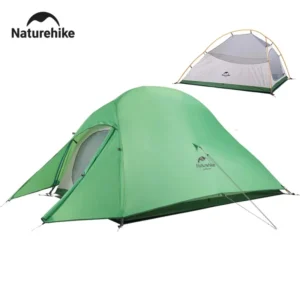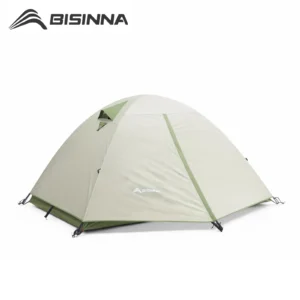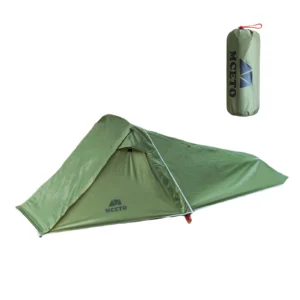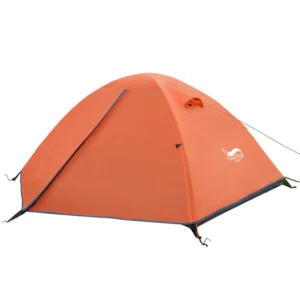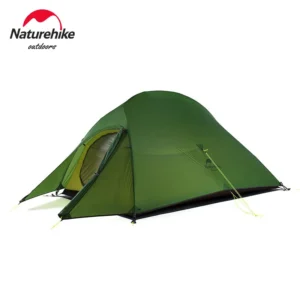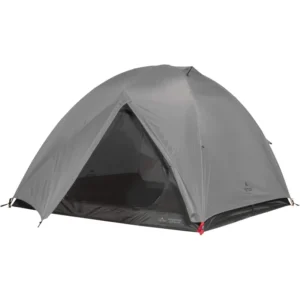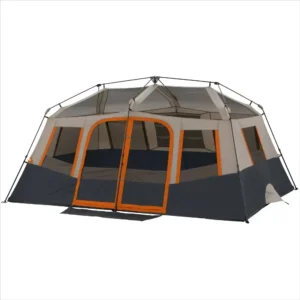Freestanding Backpacking Tent
Pitch camp anywhere with freestanding backpacking tents. Their poles build a solid frame, letting you set up easily on rock, sand, or move your shelter fast.
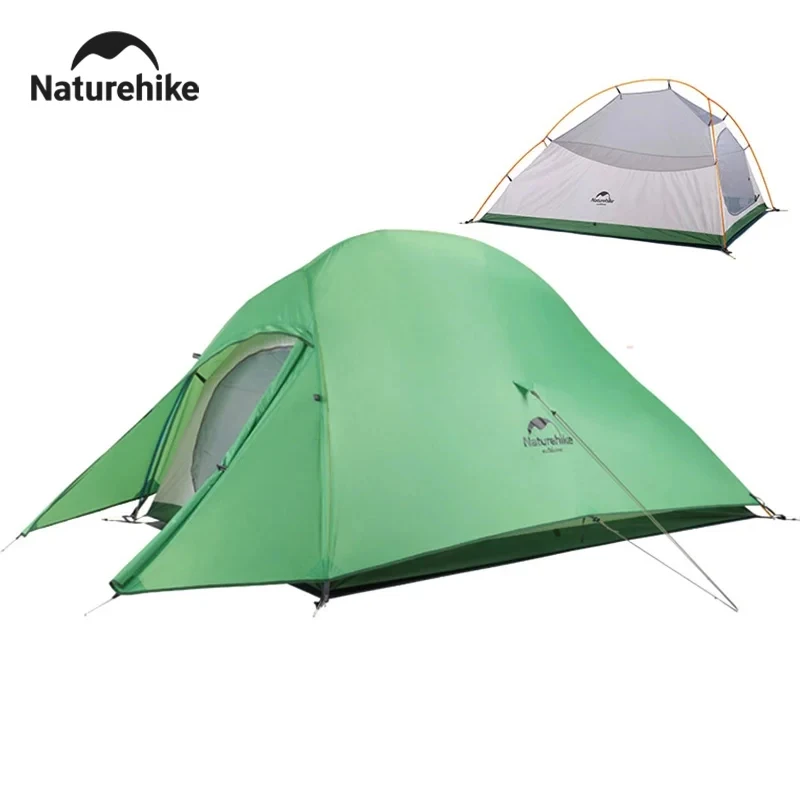
Showing all 6 results
Backpacking Tent with Vestibule, Freestanding Backpacking Tent, Lightweight Backpacking Tent, Ultralight Backpacking Tent
Price range: $546.69 through $561.82 Select options This product has multiple variants. The options may be chosen on the product pageFreestanding Backpacking Tent, Lightweight Backpacking Tent, Ultralight Backpacking Tent, Waterproof Camping Tent
$204.17 Select options This product has multiple variants. The options may be chosen on the product pageBackpacking Tent with Vestibule, Freestanding Backpacking Tent, Lightweight Backpacking Tent
Price range: $446.89 through $447.22 Select options This product has multiple variants. The options may be chosen on the product pageBackpacking Tent with Vestibule, Dome Camping Tent, Freestanding Backpacking Tent, Lightweight Backpacking Tent
Price range: $263.07 through $343.18 Select options This product has multiple variants. The options may be chosen on the product pageFreestanding Backpacking Tent, Lightweight Backpacking Tent, Ultralight Backpacking Tent, Ultralight Freestanding Tent
Price range: $734.57 through $808.01 Select options This product has multiple variants. The options may be chosen on the product pageDome Camping Tent, Freestanding Backpacking Tent, Lightweight Backpacking Tent, Waterproof Camping Tent
$411.59 Select options This product has multiple variants. The options may be chosen on the product page
Showing all 6 results
What Are Freestanding Backpacking Tents?
Freestanding backpacking tents are shelters designed to maintain their structure without the need for stakes or guy lines. These versatile shelters use an integrated pole system—typically in dome, X-pattern, or geodesic configurations—that creates a self-supporting frame once assembled. The poles insert into grommets or attachment points at the tent’s base and form arches that provide the tent’s shape and stability.
What truly sets freestanding tents apart is their ability to stand independently on virtually any surface. Unlike their non-freestanding counterparts, these tents don’t rely on tension from stakes to create and maintain their living space. This unique architectural approach creates a complete, stable structure that can be picked up and moved as a single unit.
Among the backpacking community, freestanding tents have gained tremendous popularity for their versatility and ease of use. The typical construction combines lightweight aluminum or carbon fiber poles with durable ripstop nylon or polyester fabrics, striking a balance between weight savings and durability that backpackers particularly appreciate when covering long distances.
Freestanding vs. Semi-Freestanding vs. Non-Freestanding: Understanding the Differences
When exploring tent options, understanding the structural differences between various designs helps match your gear to your adventure needs:
| Feature | Freestanding | Semi-Freestanding | Non-Freestanding |
|---|---|---|---|
| Structure without stakes | Complete stability | Partial stability | Collapses without stakes |
| Setup complexity | Simple, intuitive | Moderate | More complex |
| Average weight | 2-4 lbs (0.9-1.8 kg) | 1.5-3 lbs (0.7-1.4 kg) | 1-2 lbs (0.45-0.9 kg) |
| Terrain adaptability | Excellent (all surfaces) | Good | Limited (requires stakeable ground) |
Freestanding tents excel on surfaces where stakes aren’t effective—wooden platforms, rocky terrain, or desert sand. They maintain their shape completely using only their pole structure.
Semi-freestanding designs incorporate some self-supporting elements but may require stakes for the vestibule or full tension. These hybrid designs attempt to balance the benefits of both worlds.
Non-freestanding tents, including tarp setups and trekking pole tents, prioritize ultralight design but require proper staking and tensioning to create their living space. Their performance depends heavily on finding suitable ground for secure anchoring.
Key Advantages of Freestanding Tents for Backpackers
Freestanding tents offer several compelling advantages that make them a preferred choice for many backpackers:
Versatile Placement Options: Perhaps the most significant advantage is the ability to set up anywhere—wooden tent platforms in established sites, rocky mountain ledges, sandy beaches, or desert terrain where stakes simply won’t hold.
Easy Repositioning: Found a new spot with a better view? With a freestanding tent, you can pick up and move your fully-assembled shelter without the tedious process of breaking it down and setting it up again.
Simplified Cleaning: At the end of your trip, you can lift the entire tent to shake out dirt, pine needles, and other debris without dismantling your shelter—a small convenience that becomes surprisingly valuable after several days in the backcountry.
Structural Reliability: The self-supporting pole structure typically provides excellent stability and weather resistance, particularly in ultralight freestanding models designed to withstand challenging conditions.
User-Friendly Setup: Most freestanding tents feature intuitive, color-coded pole systems that make assembly straightforward, even for beginners or when setting up in the dark or adverse conditions.
Adaptability: These tents work well in tight spaces where properly tensioning a non-freestanding shelter might prove impossible due to obstacles or space constraints.
Potential Limitations to Consider
Despite their numerous advantages, freestanding tents do have some trade-offs worth considering:
Weight Penalty: Compared to minimalist trekking pole tents, freestanding models typically weigh 8-16 oz (227-454 g) more due to their dedicated pole structure. For ultralight backpackers counting every ounce, this difference can be significant.
Pack Size: The rigid poles don’t compress as small as trekking pole alternatives, resulting in a bulkier pack size that consumes more space in your backpack.
Price Considerations: The engineering and materials that go into quality freestanding tents often command premium prices, generally 20-40% higher than comparable non-freestanding alternatives.
Staking Still Recommended: While they stand independently, freestanding tents still perform best when properly staked out, especially in windy conditions. The freestanding feature is more about versatility than eliminating stakes altogether.
Essential Features to Look For
When evaluating freestanding tent options, focus on these critical features:
Pole Structure and Quality: Premium aluminum alloy (like 7000-series) or carbon fiber poles offer the best strength-to-weight ratio. Look for hubbed pole designs that simplify setup while adding stability.
Weather Protection: A full-coverage rainfly that extends to the ground provides the best protection. Look for waterproof ratings of at least 1,200mm hydrostatic head for the floor and 800mm for the fly, along with factory-sealed seams.
Interior Space Optimization: Beyond simple floor dimensions, examine the wall angles and peak height. More vertical walls create more usable space than steeply sloped walls, even with identical floor dimensions. For comfortable two-person use, look for at least 28-30 square feet (2.6-2.8 square meters) of floor space.
Doors and Vestibules: Dual doors eliminate the need to climb over your partner during nighttime exits, while spacious vestibules provide weather-protected storage for boots and packs. A good vestibule adds 5-10 square feet (0.5-0.9 square meters) of covered space per door.
Ventilation Systems: Strategic mesh panels, adjustable vents, and door configurations help manage condensation—a critical factor in maintaining comfort during changing weather conditions.
Weather Performance and Seasonality
Freestanding tents come in both 3-season and 4-season designs, each optimized for different environmental conditions:
3-season tents balance ventilation and weather protection with more mesh for airflow and lighter materials. They handle spring, summer, and fall conditions admirably, including light snow, but aren’t designed for harsh winter environments.
4-season models use more robust pole structures, typically with additional crossing points or poles, less mesh, and more substantial materials to withstand snow loading and high winds. Their designs minimize mesh to retain warmth while incorporating specialized ventilation systems to manage condensation in cold conditions.
Wind performance largely depends on the pole configuration, with geodesic and semi-geodesic designs offering superior stability by distributing force across multiple crossing points. When properly guyed out, quality freestanding tents can withstand sustained winds of 30+ mph (48+ kph), with specialized designs handling much more.
Setting Up Your Freestanding Tent: Best Practices
While freestanding tents offer simpler setup than most alternatives, following these practices ensures optimal performance:
- Clear your site of sharp objects and debris that could damage your tent floor
- Position the tent with doors away from prevailing winds when possible
- Assemble all poles completely before inserting into tent attachments
- Secure the tent body to the poles according to manufacturer instructions
- Attach the rainfly evenly over the structure, aligning doors and vents
- Stake out the tent despite its freestanding nature—especially the vestibules and guy points
- Tension guy lines in windy conditions for maximum stability
Even on surfaces where stakes won’t work, use rocks or other heavy objects to secure guy lines for improved performance in challenging weather.
Are Freestanding Tents Right For Your Next Adventure?
Freestanding tents shine in specific scenarios, but aren’t necessarily the best choice for every trip:
Do freestanding tents really need stakes? While they’ll stand without stakes, proper staking significantly improves stability and weather resistance. Consider stakes optional only in calm conditions or on platforms where staking isn’t possible.
Are they suitable for high-wind environments? Quality freestanding tents with geodesic designs perform excellently in high winds when properly guyed out. Their self-supporting structure distributes force better than many non-freestanding alternatives.
Can they handle winter conditions? Specialized 4-season freestanding tents absolutely can, but standard 3-season models aren’t designed for snow loading or extreme conditions.
Ultimately, freestanding tents represent an excellent all-around choice for most backpackers, particularly those who value versatility, ease of use, and reliability across diverse terrain. At Explore Elements, we’ve tested our freestanding tent collection across challenging environments from desert heat to alpine winds, ensuring each model meets our standards for durability and performance in real-world conditions.

